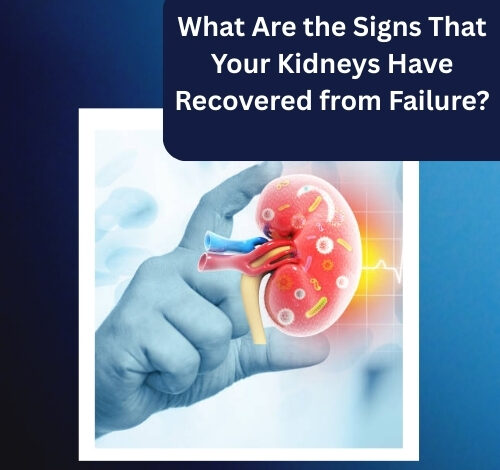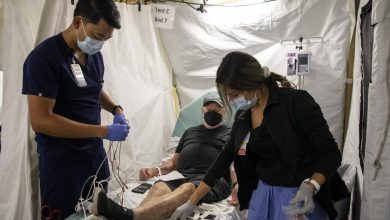What Are the Signs That Your Kidneys Have Recovered from Failure?

Kidney failure is a serious medical condition that can significantly impact a person’s overall health and quality of life. When the kidneys stop functioning properly, waste builds up in the body, leading to a host of complications. However, with timely medical intervention, lifestyle changes, and sometimes a bit of luck, kidney function may improve or even recover fully. But how do you know if your kidneys are on the mend?
In this comprehensive article, we will explore:
- The different types of kidney failure
- What kidney recovery really means
- Medical signs of kidney recovery
- Physical and emotional signs
- Lab markers that indicate improvement
- Role of dialysis and its withdrawal
- Dietary and lifestyle changes that support recovery
- Long-term prognosis
- When to consult your doctor
Let’s dive deep into understanding the signs that indicate your kidneys are bouncing back from failure.
Understanding Kidney Failure: The Basics
Before recognizing the signs of kidney recovery, it’s essential to understand what kidney failure entails.
Types of Kidney Failure
There are two main types:
- Acute Kidney Injury (AKI)
This is a sudden loss of kidney function, often reversible if treated quickly. Causes include dehydration, severe infections, medications, or obstruction. - Chronic Kidney Disease (CKD)
This is a gradual loss of kidney function over months or years. In some cases, early stages can be slowed or even reversed, especially if caused by conditions like high blood pressure or diabetes.
Can Kidneys Really Recover?
Yes, but it depends on the type and cause of kidney failure.
- AKI: Recovery is often possible, especially if the underlying cause is addressed early.
- CKD: Full recovery is less common, but function can stabilize or improve slightly with proper care.
What Does Kidney Recovery Mean?
Kidney recovery does not always mean returning to 100% function. It may include:
- Stabilization of kidney function
- No longer needing dialysis
- Return to near-normal lab values
- Resolution of symptoms
- Improved quality of life
Even partial recovery can drastically improve outcomes.
Medical Signs That Your Kidneys Are Recovering
Let’s explore the clearest indicators your healthcare provider might use to determine kidney recovery.
1. Improved Glomerular Filtration Rate (GFR)
GFR measures how well your kidneys are filtering waste.
- A rising GFR is a strong indicator of kidney recovery.
- Normal GFR is 90 mL/min or above.
- Even reaching a GFR above 60 is considered mild impairment and may be stable.
2. Reduced Creatinine Levels
Creatinine is a waste product filtered by the kidneys.
- High levels = poor kidney function.
- Declining creatinine levels suggest that your kidneys are clearing waste more efficiently.
- A consistent decrease over time is a good sign.
3. Normalized Blood Urea Nitrogen (BUN)
- BUN reflects how well your kidneys are removing nitrogen-based waste.
- As kidney function improves, BUN levels will trend downward.
4. Balanced Electrolyte Levels
Kidneys regulate potassium, sodium, calcium, and phosphorus.
- Abnormal levels often accompany kidney failure.
- Recovery brings these back to normal ranges, reducing symptoms like muscle cramps, fatigue, or arrhythmias.
5. Stable or Improved Blood Pressure
- Kidney health is closely tied to blood pressure.
- Recovery often coincides with improved blood pressure control, especially when linked to fluid balance and medication adjustments.
6. Decreased Proteinuria (Protein in Urine)
- Protein in the urine indicates kidney damage.
- Less protein or no protein in your urine is a sign of healing.
Physical and Emotional Signs of Kidney Recovery
Lab results are critical, but so are the signs you can feel and notice in your daily life.
1. Increased Energy Levels
Fatigue is one of the first symptoms of kidney failure. As toxins are cleared better and anemia improves, your energy returns.
2. Improved Appetite
Kidney failure often causes nausea and poor appetite. Recovery usually brings back interest in food and improved nutrition.
3. Better Mental Clarity
Toxin buildup in the blood can lead to confusion or brain fog. As kidney function improves, so does mental sharpness.
4. Normalized Urination Patterns
- More consistent urine output is a good sign, especially in AKI.
- Less foamy or discolored urine may also indicate recovery.
5. Reduced Swelling (Edema)
- Healthy kidneys balance fluids.
- Reduced swelling in the ankles, legs, and face suggests recovery.
6. Less Shortness of Breath
Fluid overload can affect the lungs. Improved kidney function means your body is excreting excess fluid, easing breathing.
7. Improved Sleep Quality
- Kidney failure disrupts sleep patterns.
- Recovery leads to more restful and restorative sleep.
Emotional and Psychological Indicators
Although not medical per se, emotional health often improves alongside physical recovery.
- Reduced depression and anxiety
- Increased motivation and self-care
- More engagement in social activities
- Renewed hope and confidence
Lab Markers That Point to Kidney Recovery
Here’s a table of common lab tests and what their trends should be in kidney recovery:
| Test | Desired Change | Notes |
| GFR | Increase | >60 is considered mild impairment |
| Serum Creatinine | Decrease | Lower = better filtration |
| BUN | Decrease | Should move toward normal range |
| Potassium | Normalize | Too high/low both indicate dysfunction |
| Sodium | Normalize | Should stabilize with fluid control |
| Phosphorus | Normalize | Often high in kidney failure |
| Hemoglobin/Hematocrit | Increase | Anemia improves with recovery |
| Urine Protein | Decrease | Less = less damage |
| Urinalysis (Microscopy) | Normalize | Fewer casts and cells |
Role of Dialysis in Recovery
Can You Come Off Dialysis?
In cases of AKI or early CKD, it is possible to discontinue dialysis if:
- Kidney function improves significantly
- Lab tests stabilize
- You can maintain fluid/electrolyte balance without dialysis
Signs you may be ready to stop dialysis (with doctor’s approval):
- GFR above 15 mL/min
- Low BUN and creatinine
- No significant swelling or high blood pressure
- Good urine output
- No uremic symptoms (nausea, confusion, itching)
Important: Never stop dialysis without your doctor’s supervision.
Dietary and Lifestyle Signs of Kidney Recovery
Adhering to a kidney-friendly lifestyle can reinforce recovery. Some positive signs that your efforts are working include:
1. Tolerating More Foods
With improved function, you might reintroduce foods previously restricted (like fruits high in potassium).
2. Stable Fluid Balance
Needing fewer fluid restrictions means your kidneys are handling water better.
3. Improved Physical Activity
- More stamina for walking, exercise, or daily chores is a great sign.
- Muscles also regain strength as toxins decrease.
4. Better Lab Responses to Diet
- Your blood phosphate and potassium respond better to dietary tweaks.
- Less reliance on binders or supplements.
Monitoring Kidney Recovery: How Often and What to Watch
Regular Monitoring Includes:
- Monthly or quarterly bloodwork (depending on stage)
- Blood pressure tracking at home
- Urine output logs
- Weight checks for fluid retention
Your nephrologist may adjust meds, suggest imaging (like ultrasound), or recommend seeing a dietitian based on these results.
When Full Recovery is Unlikely — But Stability Is a Win
In cases of advanced CKD or end-stage renal disease (ESRD), full recovery may not occur. However:
- Stabilization at a manageable stage (e.g., Stage 3 CKD) is a victory.
- Delay in progression = better long-term health.
- Some patients stay dialysis-free for years with careful management.
Common Misconceptions About Kidney Recovery
| Misconception | Truth |
| “Recovery means back to 100% function” | Not always—partial recovery is often the goal. |
| “Dialysis is forever” | Not in every case, especially with AKI. |
| “Urine output means kidneys are fine” | Not necessarily—some damage causes dilute urine. |
| “Once damaged, kidneys can’t heal” | Many recover fully, especially in AKI. |
How Long Does Kidney Recovery Take?
Timeline Varies:
- AKI: Days to weeks, sometimes months
- CKD: Slow, often over months or years with management
- Post-transplant: Recovery can be fast, with dramatic improvements in labs and symptoms within weeks
When to Call Your Doctor
Even during recovery, problems can arise. Contact your healthcare provider if you experience:
- Sudden decrease in urination
- New swelling or weight gain
- Nausea or vomiting
- High blood pressure
- Confusion or drowsiness
- Chest pain or shortness of breath
Supporting Your Kidney Recovery: Tips
- Stay hydrated (unless on fluid restriction)
- Follow your renal diet
- Take medications as prescribed
- Control blood pressure and blood sugar
- Avoid nephrotoxic drugs (NSAIDs, contrast dyes)
- Quit smoking
- Exercise regularly
- Keep regular appointments
Final Thoughts: Recognizing Recovery
Kidney recovery is a journey marked by many small victories. Whether it’s reduced swelling, a better appetite, improved lab numbers, or even being able to reduce dialysis sessions—each step counts.
Your body speaks in various ways. Learning to recognize these signs with your doctor’s guidance can help you stay optimistic and proactive.
While not everyone will regain full kidney function, many people go on to live long, fulfilling lives with stable or improved renal health.




